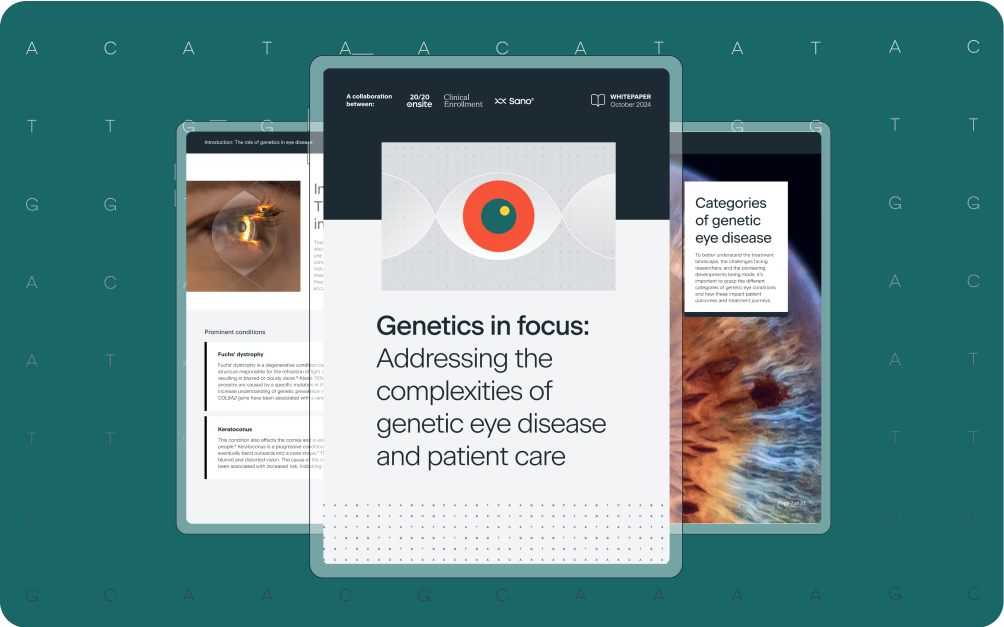Seeing the future: Breakthroughs in genetic eye disease diagnosis and therapy [Whitepaper]

Genetic eye diseases present significant challenges for patients and healthcare providers alike. Conditions like retinitis pigmentosa, Stargardt disease, and Leber Congenital Amaurosis (LCA) can lead to progressive vision loss, but with ongoing advancements in genetic research, there is growing hope for earlier diagnosis and more targeted therapies.
Our latest whitepaper, "Genetics in focus: Addressing the complexities of genetic eye disease and patient care," explores the latest breakthroughs in this crucial area, offering insights into how cutting-edge research is transforming the way we understand and treat these conditions.
Why now?
The number of known genetic eye diseases is growing, with over 350 hereditary conditions affecting millions of people worldwide. As genetic testing becomes more accessible, the opportunity to intervene earlier is expanding, allowing for more personalized treatment approaches. This is especially important for Inherited Retinal Disorders (IRDs), where genetic variants in over 280 genes have been linked to conditions that affect the retina, often leading to blindness if untreated.
Gene therapies like Luxturna, which specifically targets mutations in the RPE65 gene responsible for LCA, offer new possibilities for improving vision. Meanwhile, the emergence of diagnostic technologies such as Next Generation Sequencing (NGS) is enabling clinicians to identify disease-causing variants in up to 70% of IRD cases, providing patients with more accurate diagnoses and the potential for earlier interventions.
Key insights from the whitepaper:
- Breakthroughs in gene therapy: Precision medicine treatments represent a new frontier for IRD care, offering patients hope for vision restoration, especially in early-stage diagnoses. However, these therapies remain costly and require complex logistics for patient access.
- Challenges in genetic testing and care: While the promise of personalized treatments is real, limited access to genetic testing, specialized care, and the high cost of emerging therapies remain barriers. Ensuring equitable access to these breakthroughs is crucial for improving outcomes globally.
- Collaborative progress: The future of genetic eye disease care depends on partnerships between researchers, healthcare providers, and patient advocacy groups. Such collaborations are vital for advancing diagnostic techniques, developing innovative therapies, and ensuring all patients, regardless of location, can benefit from these advancements.
Looking ahead
As we move forward, expanding access to genetic testing and fostering collaboration across sectors will be key. Global efforts to integrate patient registries, enhance genetic counseling services, and leverage AI-driven diagnostics will help drive more effective treatments for genetic eye diseases.
Download the full whitepaper for a deeper dive into the latest research, the challenges that remain, and the transformative potential of genetic therapies for eye diseases.


